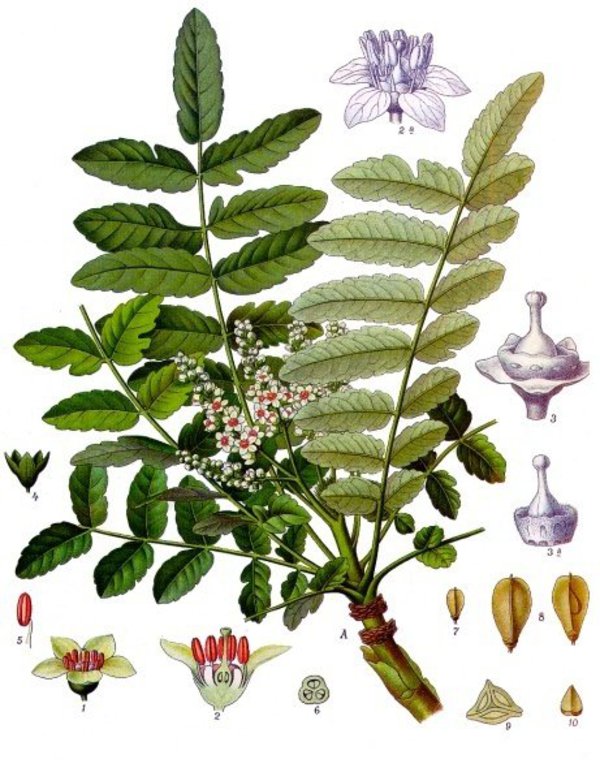
Common Name: Frankincense | Scientific Name: Boswellia Sacra

Family Name: Burseraceae
Resources
Fact Sheet
Fact Sheet
Scientific Name: Boswellia sacra
Part Used: Sap
In a Word: Anti-inflammation and anti-infection plant
Uses: Antiseptic in wound healing and application for swollen joints
Frankincense is a plant that most people know. It gets mentioned over thirty times in the Bible. It was very popular with the Israelites. Then and now, Frankincense was a special substance, a costly item, and a revered plant product.
It may be helpful to start with what frankincense is -, as few seem to know. Frankincense is the gum resin obtained by cutting the trunk of a tree. After the tree is cut into with a sharp knife, sap runs out of the tree and hardens on the stem. Collectors wait until the sap has hardened and then collect the reddish glass like masses. The hardened sap of a tree is the famous frankincense.
To become a little more specific, after the frankincense tree is sliced into with a knife, it responds by producing a sap or substance intended by the plant to seal up the incision. The tree responds to a wound the same way our bodies respond to a cut. In this case the scab is a precious spice. The scabs that are formed are removed and the tree keeps on trying to cover the wound. The tree oozes sap for a period of time. The first flow from the tree is considered the best and has a yellow colour. As the tree continues to attempt to seal its wound, the resin-gum becomes darker and darker.
Frankincense is produced on the incised bases of one of three Boswellia trees, B. carterii, B. papyrifera, or B. thurifera. These three plants are native to Arabia, Ethiopia, Somalia, India and the East Indian Islands. The Boswellia species are related to other fragrant gum resin producing trees, some you may know, others may be unfamiliar. The relations include the turpentine tree, the myrrh tree, and the balsam tree.
The frankincense and myrrh trees are two of the most famous relations as a result of the three wise men story.
Practitioners Advice
For Arthritic Conditions
On the physical front frankincense is best used as an application to stimulate healing and to remove inflammation. It is appropriate in arthritic conditions where there is inflammation and pain. The best way to use it is to dissolve it in alcohol. Once the frankincense is dissolved in the alcohol, the liquid can be put into a spray bottle or mixed with a crème. Either should be applied three times a day to painful joints.
For Wounds
When using Frankincense for wounds, you want to use an alcoholic extract of the material. With the high alcohol content you are certain the preparation is sterile. When you are applying things to broken skin you want to make certain you are not introducing any bacteria! Frankincense tincture should be applied three times a day to the affected part until perfect healing has occurred.
As a Mind Relaxant
As was stated previously, Frankincense was used to allay a troubled mind. The incense was burned and the vapours allowed to fill the room. Just spending time in the room with the fumes was said to relax a person and bring on clarity! To burn the frankincense crystals you can place them on a charcoal incense burning coal and the healing essences will be released into the air. Alternatively, the essential oil of frankincense can be used in the bath or in massage oil to have a similar relaxing and mind clearing affect.
QUICK REVIEW
History: Used by the ancients as a wound and mind healer
Science: Contains compounds that are anti-inflammatory and anti-infection
Practitioners’ Opinion: Great addition to a relaxation regime
Disclaimer: The author makes no guarantees as to the the curative effect of any herb or tonic on this website, and no visitor should attempt to use any of the information herein provided as treatment for any illness, weakness, or disease without first consulting a physician or health care provider. Pregnant women should always consult first with a health care professional before taking any treatment.
